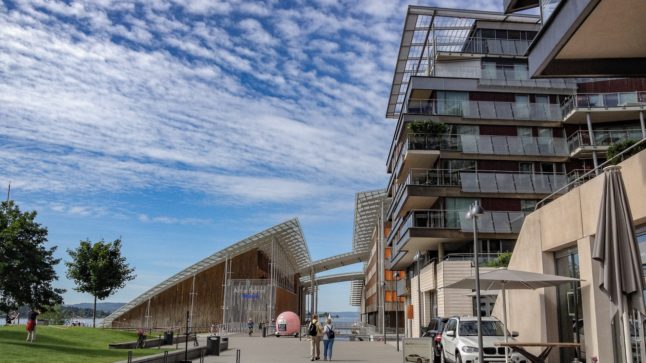The average cost of a property in Norway during the opening months of 2023 is around 4.3 million kroner and has risen 4.5 percent already this year, the latest figures show.
Despite many expecting a significant downturn in the Norwegian property market, house prices have performed steadily, if not spectacularly.
Unsurprisingly, the capital – Oslo – is the most expensive place to step on the property ladder. The most up-to-date figures show that the price per square metre to buy in Oslo is between 72,307 kroner and 96,955 kroner. We’ve used the latest price per square metre figures from national data agency Statistics Norway as average prices overall for the whole country can be challenging to find.
READ ALSO: Are Norway’s mortgage requirements different for foreign residents?
The areas around the capital, primarily those within commuting distance, are the next most expensive places to buy. A home in Bærum set house hunters in the area back in the region of 82,198 kroner per square metre for an apartment or 65,918 for a terraced or semi-detached house, and 67,093 kroner for a detached property.
Typically apartments were the most expensive per square metre due to their size. After that, it’s more of a toss-up of whether or not a semi-detached is cheaper than a fully detached property when calculating the average price per square metre.
Overall though, detached and semi-detached houses are typically Norway’s most expensive property type. The exception to this is high-end penthouse apartments in Oslo.
After Bærum, Lørenskog, Lillestørm and Frogn (all in the surrounding areas of Oslo) are the priciest areas to buy. Other areas around Oslo with high property prices are Drammen, Nordre Follo, Asker and Nittedal.
Lunner was the cheapest of all the municipalities bordering Oslo to purchase property. There it was two to three times cheaper to buy a property (per square metre) than in Oslo.
Trondheim and Tromsø were the 2nd and 3rd priciest of the big cities outside of Oslo and its surrounding areas. The average cost of an apartment in both was around 65,000 kroner per square metre for an apartment. The price of an apartment in Bergen was slightly lower at 62,000 kroner for every square metre of space.
Stavanger was considerably cheaper, with an apartment in the southwesterly city costing just a shade over 50,000 kroner per square metre in 2022.
Looking at things on a more national scale, the counties of Oslo, Viken, and Trondheim are the most expensive places to purchase an apartment. The two largest counties in Norway were the most expensive places to buy detached or terraced houses.
Vestfold and Telemark was the third most expensive location for detached homes, while terraced properties in Trøndelag took bronze for the most costly in Norway.
For an overview of the most expensive individual properties in Norway by asking price currently on the market, you can use this filter on the ad listing site Finn.no. For those looking for a home at a cut-price deal, you can also view the homes when sorted from lowest to highest.
Kvinesdal, Kristiansund, Froland, Sveio, and Farsund were the five cheapest places for an apartment. Flats in all five cost around 26,000 kroner per square metre. Kivensdal, Froland and Farsund are all found In Agder. Farsund is located in the mouth of the Lyngdalsfjorden, offering excellent views for some of Norway’s cheapest properties per square metre.
However, there was a relative lack of data on apartment prices compared to other property types, meaning there may be cheaper places for a flat that figures don’t exist for currently. Detached homes in Rendalen, Stor-Eidval, Dovre, Nissedal and Hjartdal were the most affordable in the country per square metre. A detached property in these areas costs between 8,900 and 11,100 kroner per square metre.
On a more national level, Møre og Romsdal, Innlandet and Nordland are the cheapest areas in Norway to buy property.



 Please whitelist us to continue reading.
Please whitelist us to continue reading.
Member comments